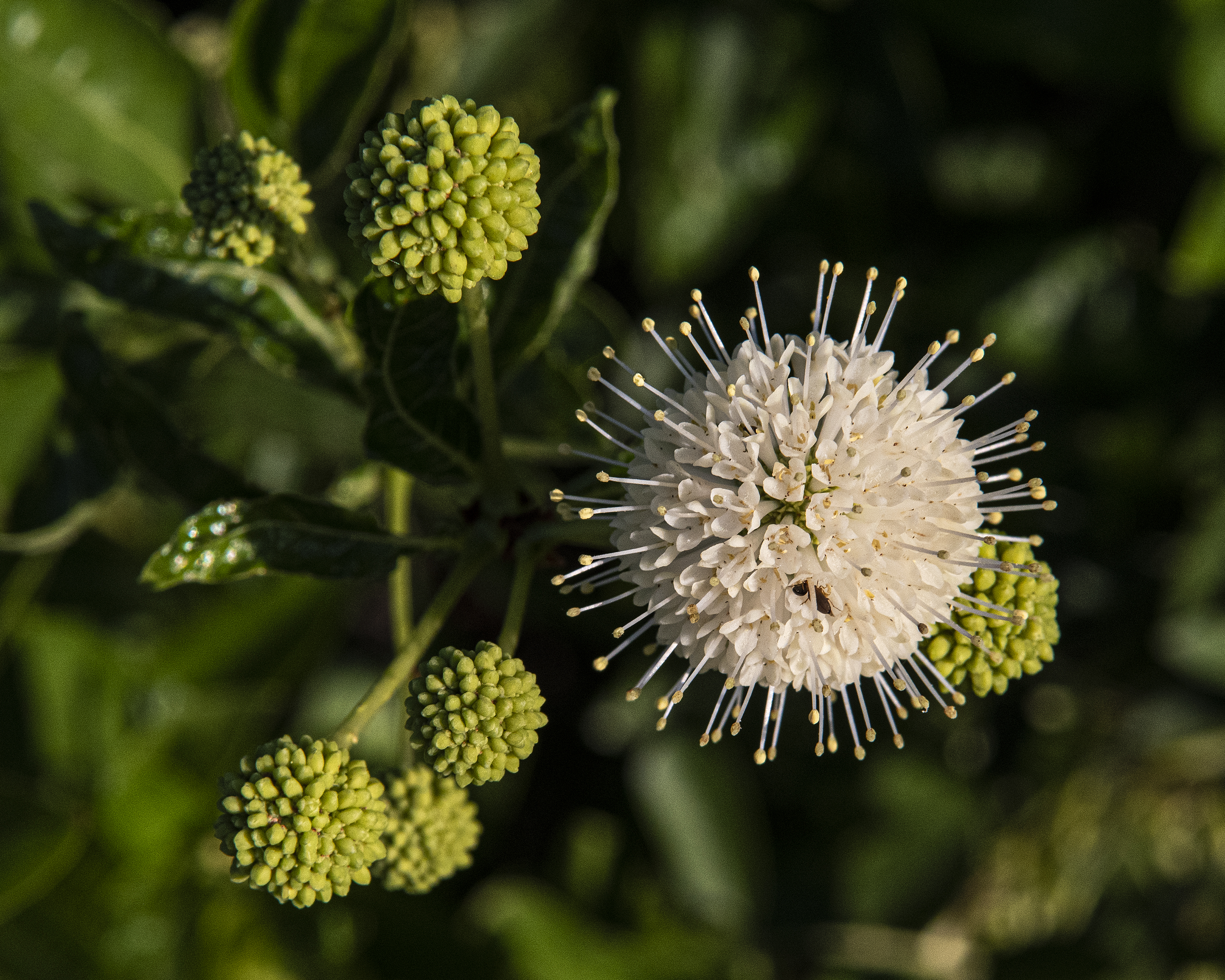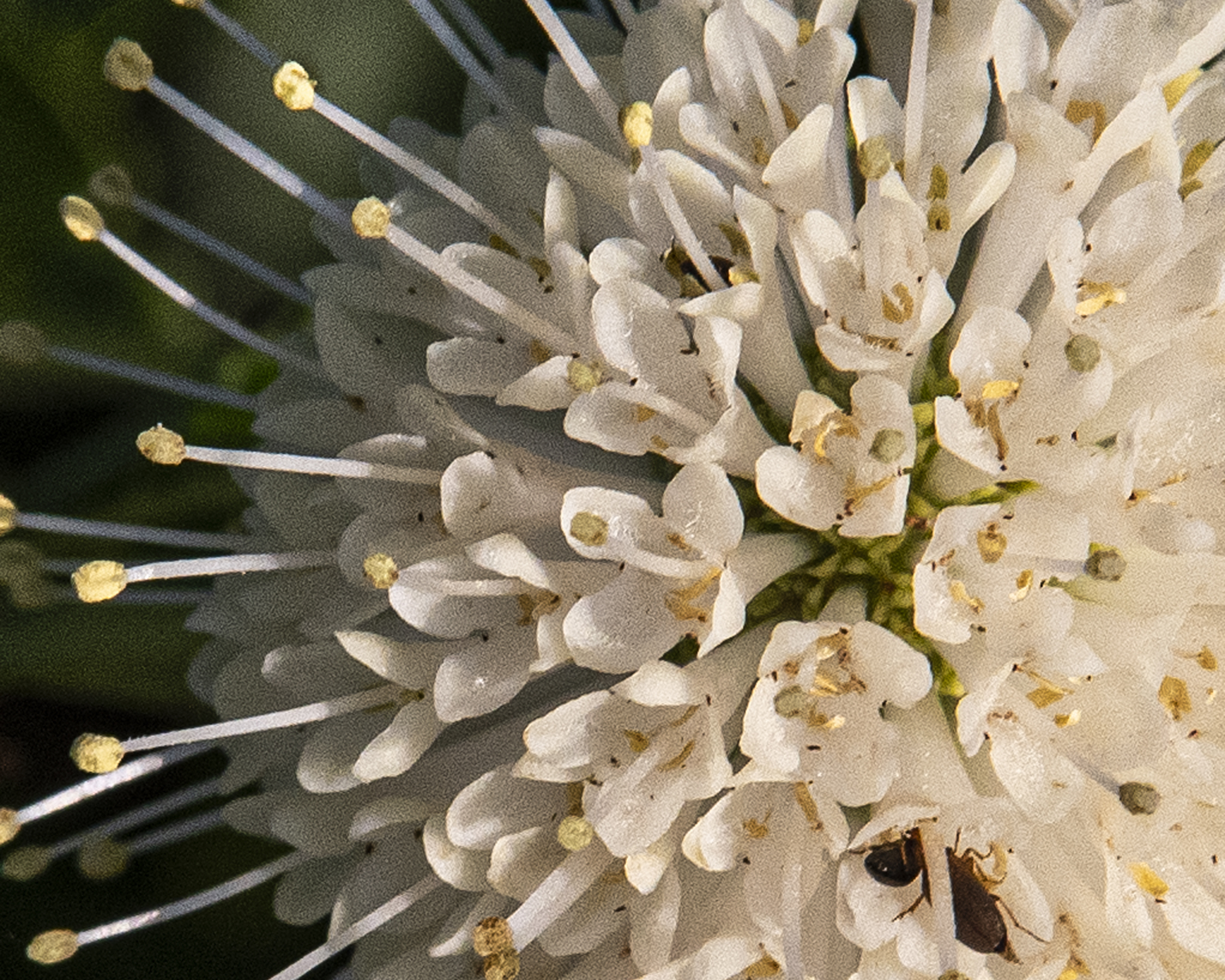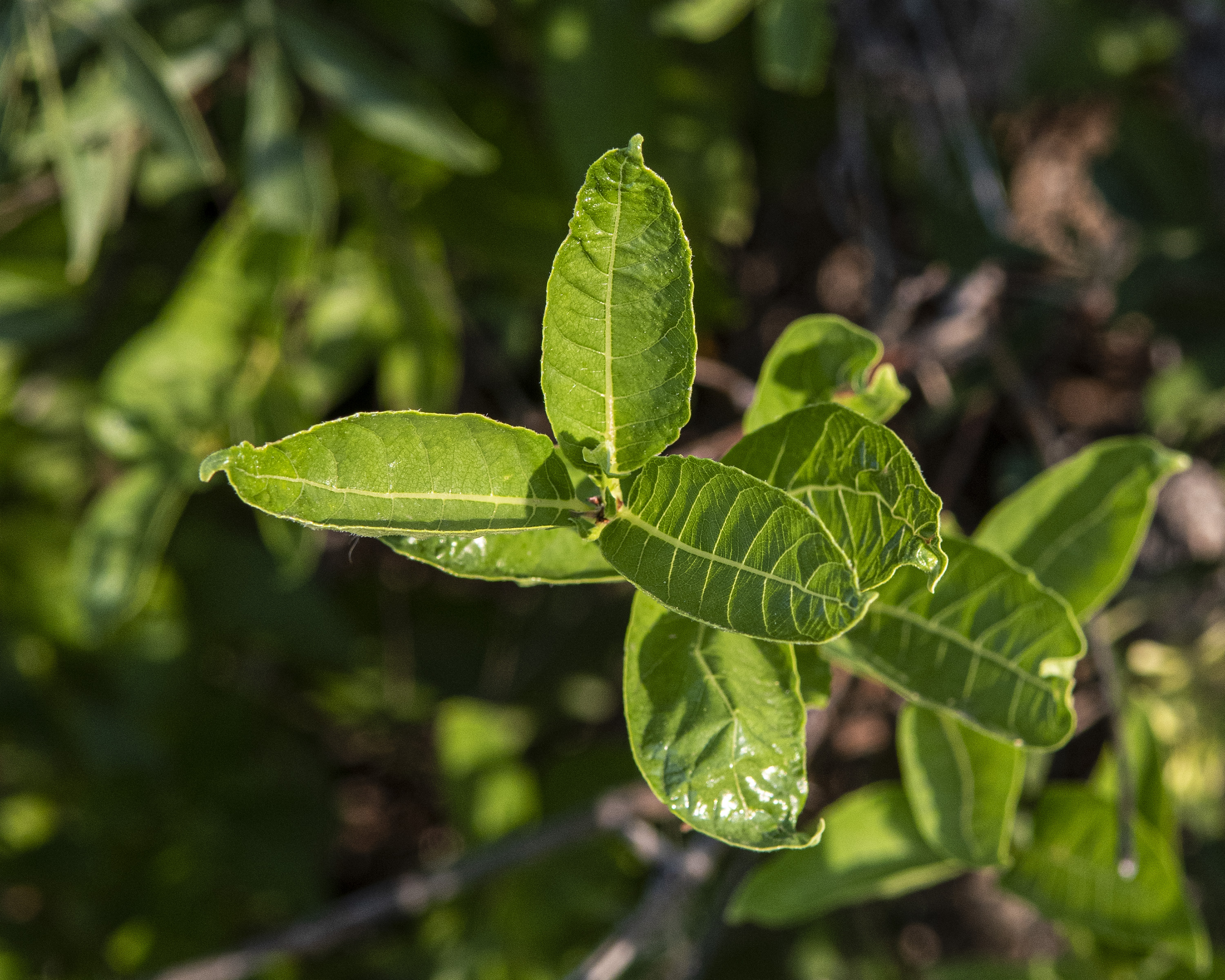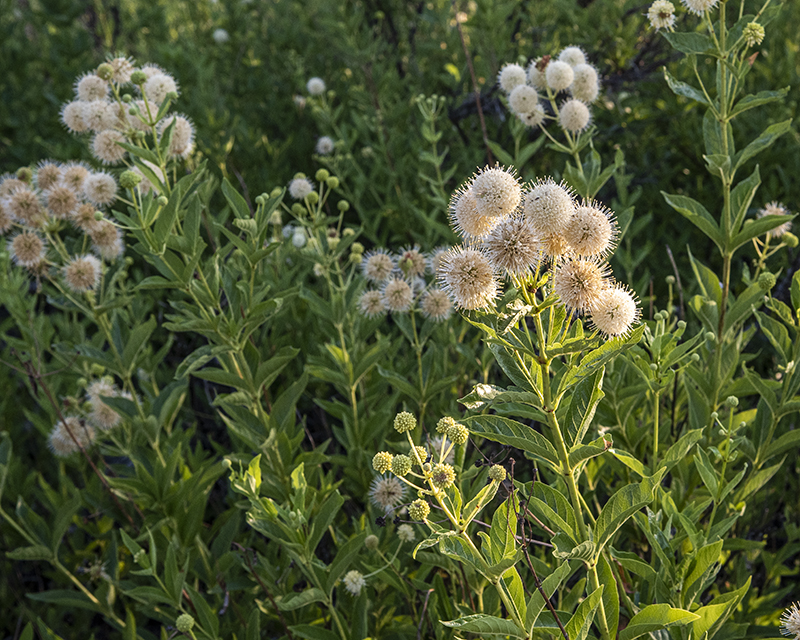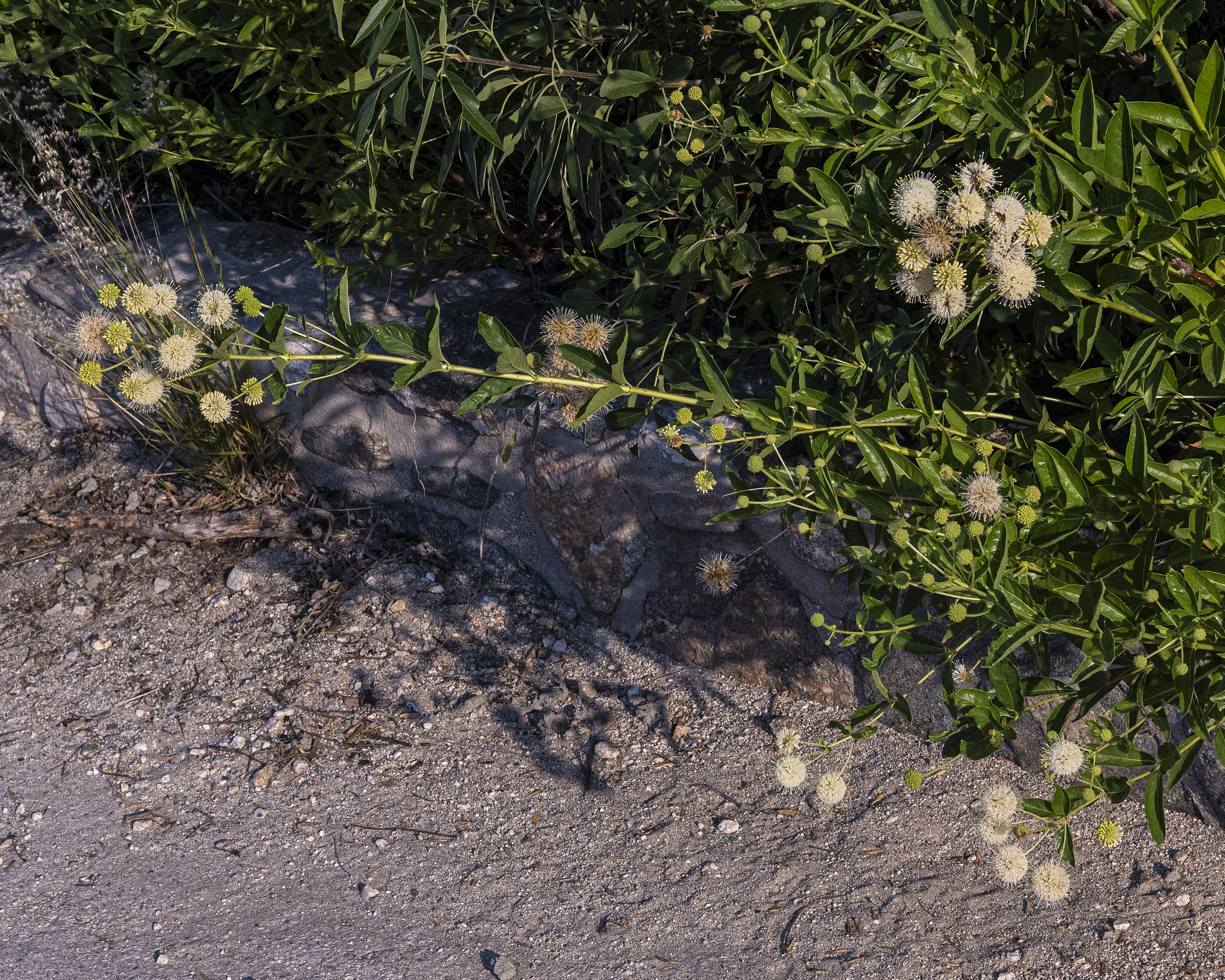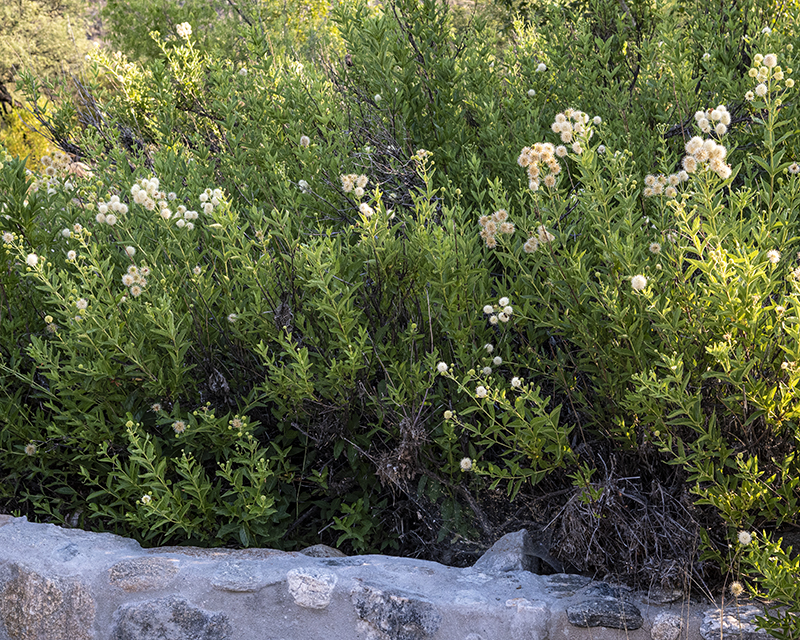Wildflowers of Southern Arizona
Common Buttonbush.
Cephalanthus occidentalis.
Madder (Rubiaceae) Family.
Duration: Perennial. Nativity: Native. Lifeform: Tree. Wetland Status: OBL. General: Shrub or small tree 2-7 m tall with opposite leaves, the trunks to 50 cm in diameter. Leaves: Opposite, 2-3 per node, each 7-12 cm long, glabrous or with minutely scabrous margins and dorsal veins, blades narrowly elliptic or ovate, narrowed to short petioles, attenuate at apices, stipules very small, scarious, triangular to lunate, entire. Flowers: Spherical pedunculate head 3-35 cm in diameter, solitary or cymosely clustered at ends and upper nodes of branches, peduncles 2.5-9 cm long; flower with calyx densely pubescent, shallowly and somewhat irregularly lobed, corolla 8 mm long, white or yellowish, more or less pubescent within, tube slender, longer than throat and ovate lobes, anthers included but styles much exserted to 4 mm. Fruits: Turbinate achene, irregularly compressed, falling when ripe. Ecology: Found along the margins of streams, often in canyons in rocky soils to marshy land from 1,500-4,500 ft (457-1372 m); flowers June-September. Notes: Ours is var. californicus which is distinguished by the narrower, generally smaller and less abruptly petiolate leaves often on shorter petioles. Ethnobotany: Used for eye trouble and as a medicine for dysentery. Etymology: Cephalanthus is from Greek kephale, head and anthos, flower, while occidentalis means of the west.
Santa Catalina Mountains.
Sabino Canyon Recreation Area.
Location: Beside bridge below dam.
6/11/20
See SEINet Pictures and Description
See FireFly Forest Pictures and Description


